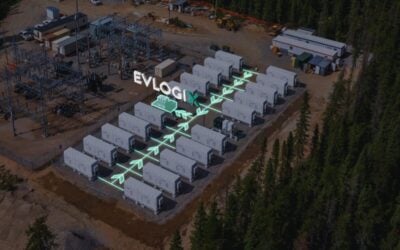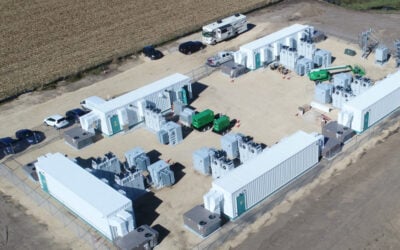Oregon's Public Utility Commission buildings.
Oregon has become the latest US state to lay out its foundations for electricity companies to procure and deploy energy storage systems, with the state Public Utility Commission (PUC) providing guidelines and timelines.
The state actually enacted bill HB2193, which would authorise utilities to explore the possibilities of deploying energy storage for reasons including deferring spending on transmission infrastructure, back in 2015. The latest document to emerge from the PUC gives details on how it sees that electric companies with over 25,000 retail customers could select storage system providers and present project proposals to the commission. Once approved, they have been given until 2020 to procure projects.
Enjoy 12 months of exclusive analysis
- Regular insight and analysis of the industry’s biggest developments
- In-depth interviews with the industry’s leading figures
- Annual digital subscription to the PV Tech Power journal
- Discounts on Solar Media’s portfolio of events, in-person and virtual
Or continue reading this article for free
This would apply to two utilities, Pacificorp, trading as Pacific Power, and Portland General Electric Company (PGE). While the systems should have over 5MWh storage capacity each, they would also be capped at 1% of the utility’s peak load in 2014, except, the PUC said, for a project of “statewide significance”. Utilities will be allowed to recover the costs of projects from ratepayers.
GTM Research’s recent report on third quarter 2016 activity in energy storage in the US highlighted policy moves to spur on energy storage development in Oregon and in Massachusetts as two of the states following national leaders California and New York’s lead in recognising the value of energy storage. Massachusetts has determined that it will implement procurement targets for storage, although it has yet to rule on their size or timescale.
Guidelines
The PUC document’s guidelines for projects and proposals appear to recognise some of the key elements that would make energy storage projects valuable. For instance, it states that electric companies are “encouraged to submit projects that can serve multiple applications” – in other words enabling the “stacking” of use cases and potentially revenue streams. It also recognises that energy storage systems could be used to defer much costlier investment in transmission infrastructure such as substations. Other potential uses include making system upgrades, performing ancillary services and other “location-specific” services. Utilities are encouraged to issue requests for information (ROI) to potential vendors of energy storage systems.
Oregon PUC also asked for proposals to be detailed in providing technical specifications, including capacity, location and services that systems could provide as well as details of the technology necessary to construct projects. Utilities must also outline what they expect the system to cost. From there, they will be expected to also list the benefits each project could confer to the electricity networks at local, state and system level.
Ongoing throughout the year will be efforts to then unify the utilities’ proposed projects under a framework suitable for HB2193, in other words to be scaled across the state. A special public meeting will be held on or before 31 March to establish which use cases for storage seem appropriate and assess the methodologies used to determine the value of storage by each electric company. The power companies then have until June to submit drafts, ahead of another July special public meeting for informal comments from the commission and stakeholders, before being given until 1 January 2018 to file formal project proposals.
Competitive bidding processes are encouraged for vendors, unless they can determine that a single provider is best-placed to deploy a project. Either way, utilities must show the commission how they arrived at their decisions.






